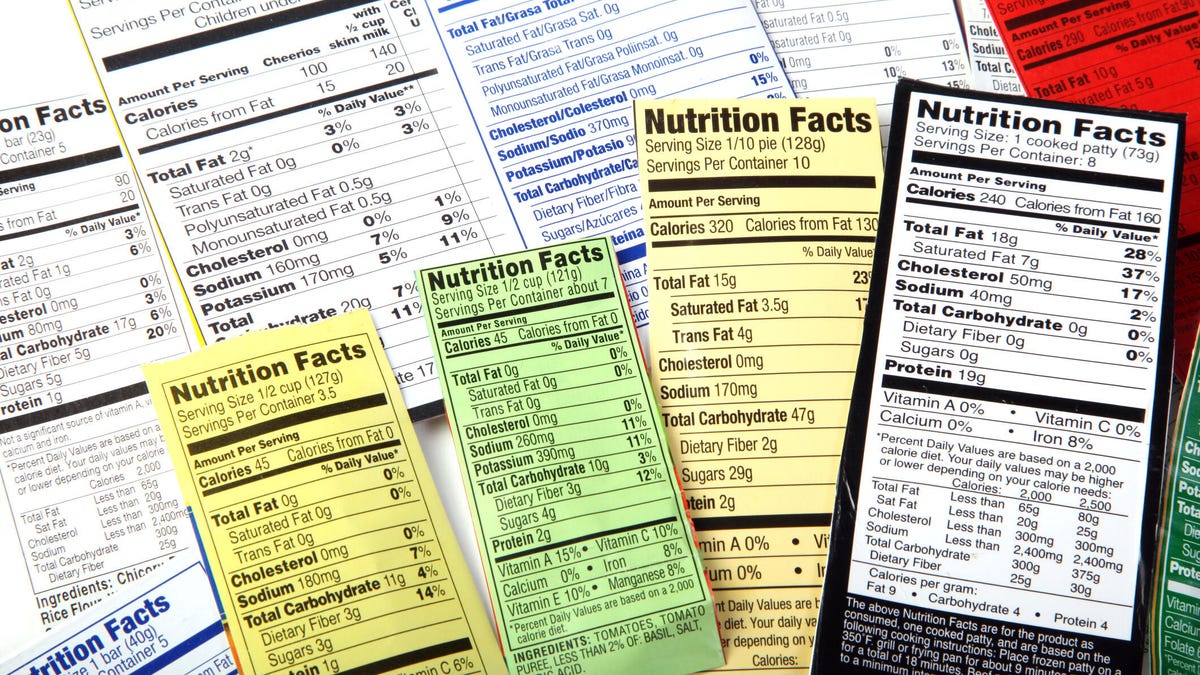There's a new nutrition facts label for 2020. Here's how to read it
This year, the nutrition labels on packaged food products are changing to help you eat healthier.

The mandatory changes to the nutrition label reflect updated scientific findings.
In 2020, expect to see some of your favorite foods sport a new nutrition facts label as mandatory changes from the FDA go into effect. Based on updated dietary guidelines and the need for food transparency, the FDA designed new food labels to help consumers make smarter food decisions.
This change is years in the making: The FDA first announced the new rules on May 27, 2016, stating that the changes were to reflect advancements in nutrition science. This food nutrition label change is the first major update since the FDA first instated uniform food labeling in 1994. According to the FDA, these changes are "based on updated scientific information, new nutrition and public health research, more recent dietary recommendations from expert groups and input from the public."
The new label is also more realistic about what people eat today and what fuels chronic disease. For instance, the added sugar requirement reflects knowledge about sugar and its relationship to type 2 diabetes, cardiovascular disease and obesity.
The overall purpose is to help consumers make informed decisions about food that will improve their health and nutrition.
The new food nutrition label.
When do these changes go into effect?
Large food manufacturers with more than $10 million in annual revenue were required to make the switch by Jan. 1, 2020. Some big food and beverage brands, such as Gatorade and Hershey's, relabeled their products years ago -- complying with the original deadline of July 28, 2018 (the FDA later pushed this date back to the 2020 deadline).
Smaller companies -- those with less than $10 million in annual revenue -- have until Jan. 1, 2021 to comply with the new label rules. However, shop around and you'll notice that many smaller brands have already started to make the shift.
New nutrition label vs. old
The new label looks more or less the same as the old one, which is exactly why it's important to know what you're looking at (and why you're looking at it).
Serving size
The serving sizes on labels have increased to reflect the amounts that people actually consume today. This helps consumers more appropriately gauge portion sizes and calorie equivalents. The FDA uses ice cream as an example: The old serving size was half a cup, and the new serving size is two-thirds of a cup to reflect the amount of ice cream that most people eat in one sitting.
This seems counterintuitive when there's so much talk of the obesity epidemic, but the FDA says that "serving sizes must be based on the amounts of food and drink that people typically consume, not on how much they should consume" and recent food consumption data shows that people eat larger serving sizes than they used to.
Dual serving size label
Some packaged foods contain servings per container, but can be eaten in one sitting. For example, a pint of ice cream contains more than one serving, but people often eat a whole pint as a single serving. So the label on a pint now has to show the calories in one serving and in the entire pint.
Calories
This change is simple: The calories section is larger and in bold so it's the first thing you see. While there's some controversy over calorie counting, when it comes to maintaining or losing weight, a calorie is a calorie and it's important to know (at least roughly) number of calories you're consuming.
A side by side comparison of the old and new nutrition facts panel on packaged food.
Fats
The traditional nutrition label reported "calories from fat" beside "calories per serving." New nutrition science has shown that the type of fat consumed is more important than the amount of fat consumed, so the new label doesn't include "calories from fat." The new label still shows grams of unsaturated, saturated and trans fat, as well as the percentage of the recommended daily intake.
Added sugars
Food manufacturers are now required to disclose how much of the sugar in their products is added sugar. This is perhaps the most important change, as added sugar consumption in the US is way too high, with the average American consuming 17 teaspoons of added sugar per day.
Added sugars include any sugars that are added during processing or are packaged as sugar (like a bag of table sugar). Sugar from honey and syrups, as well as concentrated fruit and vegetable juices, also fit under the added sugars umbrella.
The new label includes a daily value percentage for added sugars because the FDA recommends keeping total added sugar intake to less than 10% of total calories. Exceeding that, according to the 2015-2020 Dietary Guidelines for Americans, makes it very hard to meet other nutritional recommendations.
Nutrients
The nutrients portion of the label now shows vitamin D, calcium, potassium and iron. The old label reported amounts for vitamin A, vitamin C, calcium and iron. The changes reflect the fact that most Americans don't get enough vitamin D and potassium each day, and deficiencies of vitamins A and C are rare.
Also, the label shows the amounts of vitamins and minerals in milligrams in addition to the percentage of the daily recommended intake. The old food label showed only the percentage.
Footnote
The footnote at the bottom of the label has been reworded to better explain what "percent daily value" means. The %DV of an ingredient tells you how much an ingredient contributes to the total amount of that ingredient you need each day. The %DVs are still based on a 2,000-calorie diet.
Unchanged food nutrition facts
The new label includes the same sections for the amount of carbohydrates, sodium, cholesterol, dietary fiber and protein in each serving.

